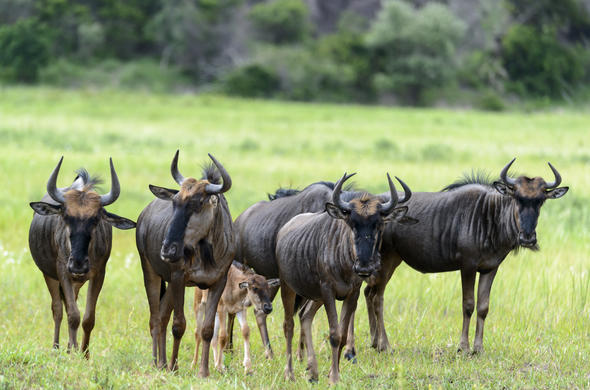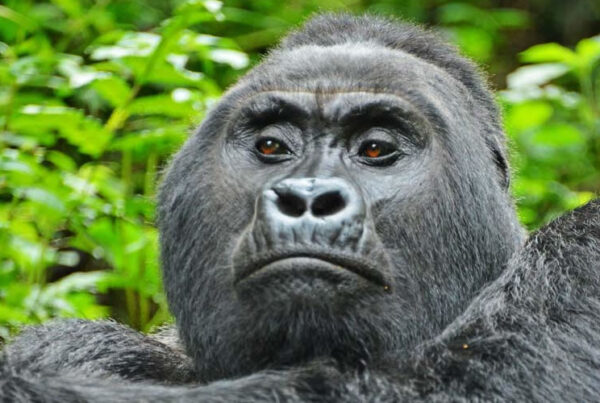5 Fascinating Facts About the Blue Wildebeest
Facts About the Blue Wildebeest
Africa’s Iconic Migrant with a Thundering Legacy
Thundering hooves, vast open plains, and one of the greatest spectacles of animal migration on Earth—the Blue Wildebeest is a true icon of the African savanna. Known scientifically as Connochaetes taurinus, this large antelope is not only a vital part of Africa’s ecological web but also a mesmerizing creature in its own right. Often called the “brindled gnu” due to its shaggy mane and beard, the Blue Wildebeest is a master of survival, movement, and adaptation. It may not have the regal reputation of the lion or the sleek elegance of the cheetah, but its story is no less dramatic, and in many ways, even more vital to the continent’s ecosystems.
In this exploration of the Blue Wildebeest, we dive deeper into five fascinating facts that reveal why this animal commands attention, awe, and respect in equal measure. From its epic migrations to its unexpected intelligence, the wildebeest is a creature of both grandeur and nuance.
The Great Migration: A Natural Wonder of the World
Perhaps the most spectacular aspect of the Blue Wildebeest’s life is its central role in the Great Migration. Each year, over 1.5 million wildebeest—accompanied by hundreds of thousands of zebras and gazelles—embark on a relentless journey across the plains of Tanzania and Kenya in search of fresh grazing lands and water. This circular pilgrimage, driven by seasonal rains, covers more than 1,800 miles annually.
The migration is a raw, visceral display of nature’s rhythm, where life and death unfold in real time. It is during this journey that thousands of wildebeest fall prey to predators such as lions, cheetahs, crocodiles, and hyenas. The Mara River crossing, in particular, has become symbolic of this life-or-death spectacle. Despite the dangers, the wildebeest persist, driven by instinct and necessity. Their movement not only supports their own survival but also sustains the very predators and scavengers that rely on this constant source of food.
What’s more, this migration is essential for the health of the savanna. The trampling of hooves aerates the soil, and the dung left behind fertilizes the land. The wildebeest are not just participants in this grand journey—they are engineers of the ecosystem.
Surprisingly Sophisticated Social Structures
While the Blue Wildebeest may appear chaotic en masse, its social structure is remarkably organized. These antelopes live in large herds, often segregated by age and sex during the non-migratory season. Males establish and defend territories, especially during the mating season, when competition for females becomes fierce. Despite this aggressive behavior, wildebeest herds exhibit cooperation and cohesion, especially during migration.
Calves are born synchronously, within a short window of time, a phenomenon known as birth synchrony. This inundates predators with more prey than they can consume, increasing the survival rate of the newborns. Mothers are highly attentive and can recognize their own calves among thousands by sound and smell, showcasing an emotional intelligence not often attributed to ungulates. This strong maternal bond plays a critical role in maintaining herd stability and survival.
Moreover, wildebeest use a combination of vocalizations, body language, and scent markings to communicate. Their low-frequency bellows are used to maintain group cohesion, warn of danger, or signal readiness to move. Such communication strategies reflect an evolved, highly social animal capable of dynamic group coordination.
Unrivaled Endurance and Adaptability (Facts About the Blue Wildebeest)
One of the most striking features of the Blue Wildebeest is its extraordinary stamina. Built for long-distance travel, this antelope has a stocky yet muscular frame, well-developed shoulders, and strong legs that allow it to travel over 30 kilometers in a single day. Unlike many antelope species that rely on bursts of speed, the wildebeest is designed for endurance.
Its large nostrils and efficient respiratory system help it regulate body temperature and oxygen intake during prolonged movement. It is also capable of going without water for several days, relying on moisture from grasses and dew. This endurance is crucial for its migratory lifestyle, which involves traversing arid and semi-arid landscapes.
Wildebeest are also incredibly adaptive in their feeding habits. While primarily grazers, they can shift between different grass species based on seasonal availability. This dietary flexibility ensures that they remain nourished even when food becomes scarce. Their digestive systems are finely tuned to extract maximum nutrients from low-quality forage, a trait that gives them a competitive edge in dry seasons.
A Keystone Species in the African Ecosystem
The Blue Wildebeest is far more than just a migratory marvel—it is a keystone species that shapes the very landscape it roams. By consuming large quantities of grass, wildebeest help prevent overgrowth and maintain the balance of plant species across the savanna. This grazing pattern facilitates biodiversity by allowing a variety of flora and fauna to flourish.
Moreover, their movements create migratory corridors used by other species, and their presence often dictates predator movements and hunting patterns. Lions, hyenas, leopards, and crocodiles time their reproductive and hunting cycles around the wildebeest’s migration, highlighting the interconnectedness of Africa’s wildlife.
Even in death, the wildebeest contributes to the ecosystem. Carcasses provide food for scavengers and enrich the soil with nutrients, thereby sustaining future plant growth. The species’ life cycle is so deeply intertwined with its environment that its disappearance would lead to cascading ecological consequences.
Ancient Evolution with Modern Relevance
The Blue Wildebeest has roamed the African plains for over a million years, its lineage dating back to the Pleistocene epoch. It has survived ice ages, climate shifts, and changing predator populations, evolving into a resilient, intelligent species finely attuned to its environment.
Yet despite its success, the wildebeest faces modern challenges. Human encroachment, fencing, agriculture, and climate change threaten migratory routes and reduce access to vital resources. As ecosystems become fragmented, the wildebeest’s ability to perform its ancient migratory rites is compromised, leading to population stresses and ecological imbalances.
Conservation efforts are increasingly focused on preserving migration corridors and promoting coexistence between wildlife and human communities. Recognizing the wildebeest’s ecological importance is essential not just for its survival but for the health of Africa’s great wildernesses.
Discover the Wildebeest with WildHorn Africa
To witness the awe-inspiring life of the Blue Wildebeest, there is no substitute for being on the ground during the Great Migration. The experience of seeing thousands of animals moving as one—driven by instinct, survival, and the pulse of nature—is transformative.
WildHorn Africa offers expertly guided safaris that bring you face-to-face with this remarkable species and the ecosystems it sustains. Whether you’re exploring the Serengeti, the Masai Mara, or the Ngorongoro Crater, WildHorn Africa ensures an immersive, conservation-driven experience that connects you with the wild in unforgettable ways.
Book your African safari with WildHorn Africa today and become a witness to the epic journey of the Blue Wildebeest—a story of endurance, unity, and the untamed heart of Africa.
Facts About the Blue Wildebeest #Facts About the Blue Wildebeest Facts About the Blue Wildebeest





 WildHorn Africa – Authentic and unforgettable tours across Africa, guided by local experts who know the land, wildlife, and culture best.
WildHorn Africa – Authentic and unforgettable tours across Africa, guided by local experts who know the land, wildlife, and culture best.


